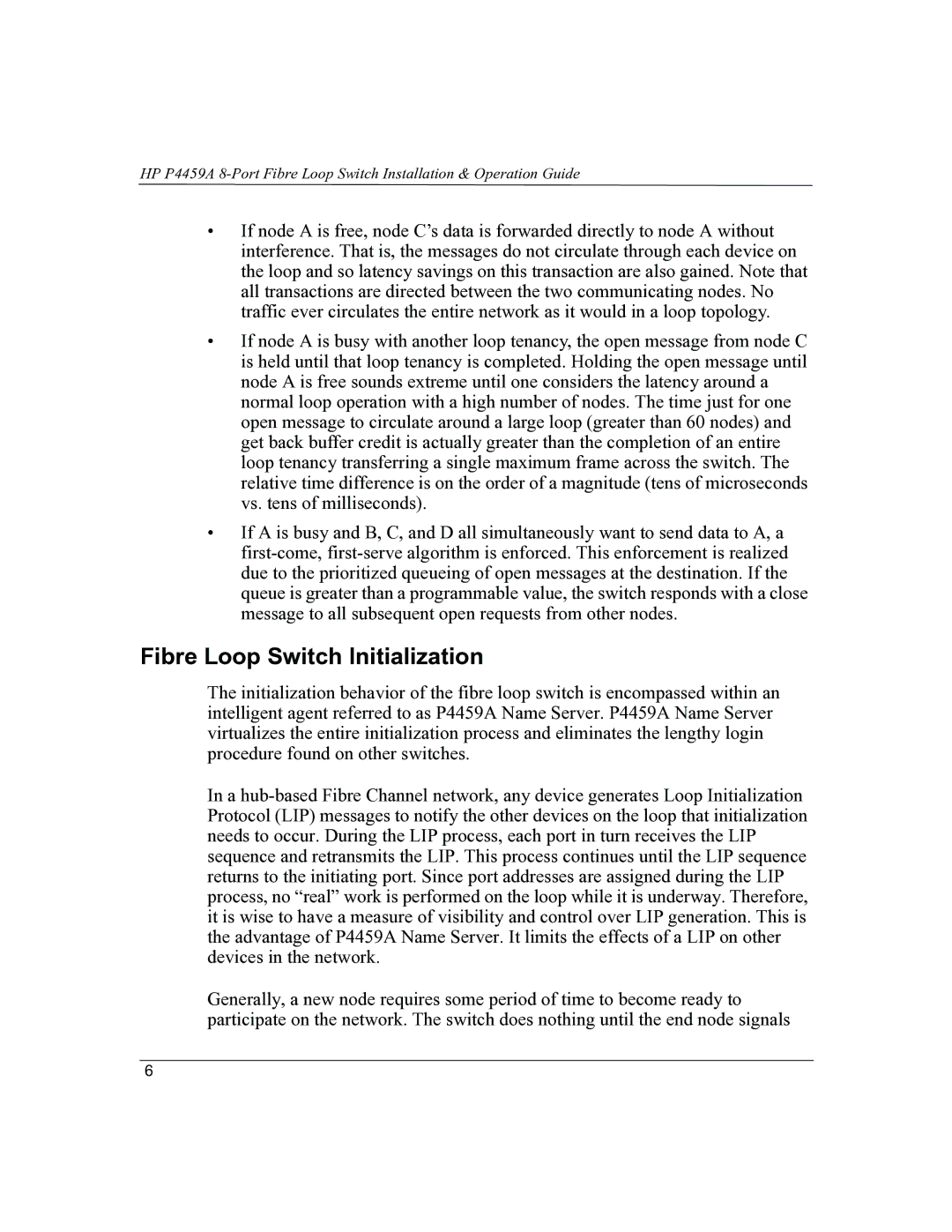
HP P4459A
•If node A is free, node C’s data is forwarded directly to node A without interference. That is, the messages do not circulate through each device on the loop and so latency savings on this transaction are also gained. Note that all transactions are directed between the two communicating nodes. No traffic ever circulates the entire network as it would in a loop topology.
•If node A is busy with another loop tenancy, the open message from node C is held until that loop tenancy is completed. Holding the open message until node A is free sounds extreme until one considers the latency around a normal loop operation with a high number of nodes. The time just for one open message to circulate around a large loop (greater than 60 nodes) and get back buffer credit is actually greater than the completion of an entire loop tenancy transferring a single maximum frame across the switch. The relative time difference is on the order of a magnitude (tens of microseconds vs. tens of milliseconds).
•If A is busy and B, C, and D all simultaneously want to send data to A, a
Fibre Loop Switch Initialization
The initialization behavior of the fibre loop switch is encompassed within an intelligent agent referred to as P4459A Name Server. P4459A Name Server virtualizes the entire initialization process and eliminates the lengthy login procedure found on other switches.
In a
Generally, a new node requires some period of time to become ready to participate on the network. The switch does nothing until the end node signals
6
